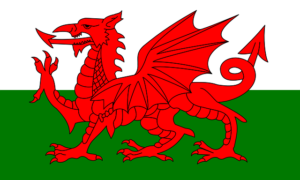Is the Welsh Grand National a credible trial for the Grand National?
 Nowadays run over 3 miles, 6 furlongs and 130 yards, the Welsh Grand National has been a fixture of the Yuletide programme at Chepstow since 1979. Notwithstanding the fact that the going at Chepstow in late December is often soft or heavy, the marathon distance of the Welsh Grand National and its position in the calendar – three months or so before the Grand National, in late March or early April – ought to make it a reliable trial for the Aintree showpiece.
Nowadays run over 3 miles, 6 furlongs and 130 yards, the Welsh Grand National has been a fixture of the Yuletide programme at Chepstow since 1979. Notwithstanding the fact that the going at Chepstow in late December is often soft or heavy, the marathon distance of the Welsh Grand National and its position in the calendar – three months or so before the Grand National, in late March or early April – ought to make it a reliable trial for the Aintree showpiece.
However, it may surprise you to learn that, since 1979, just four horses have won both races and just two of them did so in the same season. The first of them, Corbiere, trained by Jenny Pitman, fought out a tremendous finish with Pilot Officer in the 1982 Welsh Grand National, eventually winning by a head. In the 1983 Grand National, Corbiere held off Greasepaint by three-quarters of a length, thereby making Jenny Pitman the first woman to saddle a Grand National winner.
In 1997, having returned from a 634-day break at Haydock Park in mid-November, Earth Summit, trained by Nigel Twiston-Davies, won the Welsh Grand National at odds of 25/1, beating Dom Samurai by 1¼ lengths, all out. The following April, he justified favouritism in the 1998 Grand National, staying on well to beat Suny Bay, who was conceding 23lb, by 11 lengths.
Nigel Twiston-Davies also won the Welsh National and the Grand National with Bindaree, although he won at Aintree in 2002, the year before he won at Chepstow. The other horse to win both races was Silver Birch, who won at Chepstow in 2004, when trained by Paul Nicholls, and at Aintree three years later, when trained by Gordon Elliott.
 The popularity of ante-post betting on horse racing – that is, placing a bet on the outcome of a horse race well in advance of, or at least a day before, the off – is not what it once was. Betting ante-post doesn’t necessarily guarantee that you’ll receive better odds than if you bet on the day of the race, with the added risk that you’ll lose your money if your selection doesn’t run, for whatever reason.
The popularity of ante-post betting on horse racing – that is, placing a bet on the outcome of a horse race well in advance of, or at least a day before, the off – is not what it once was. Betting ante-post doesn’t necessarily guarantee that you’ll receive better odds than if you bet on the day of the race, with the added risk that you’ll lose your money if your selection doesn’t run, for whatever reason.